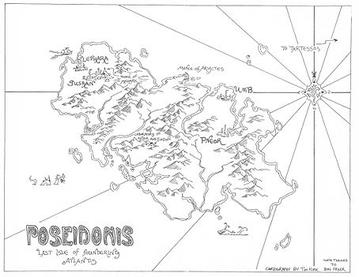
Poseidonis is the fictional last remnant of the lost continent of Atlantis, mentioned by Algernon Blackwood in his novella "Sand" (published in 1912 in his collection Pan's Garden) and also detailed in a series of short stories by Clark Ashton Smith. Smith based Poseidonis on Theosophical scriptures about Atlantis [1] (such as Secret Doctrine by Helena Blavatsky), and his concept of "the last isle of foundering Atlantis" is echoed by the isle of Númenor in J. R. R. Tolkien's legendarium.